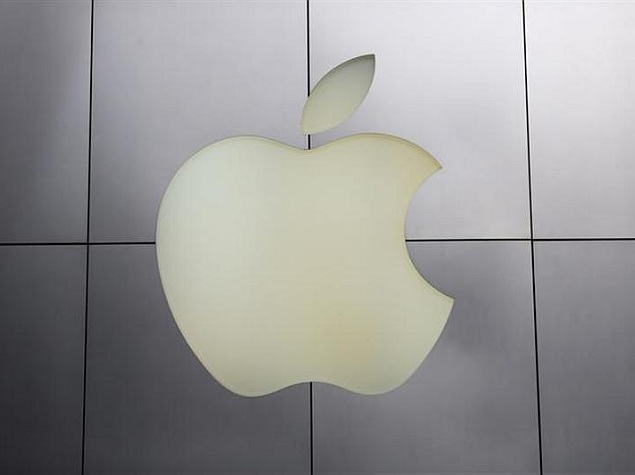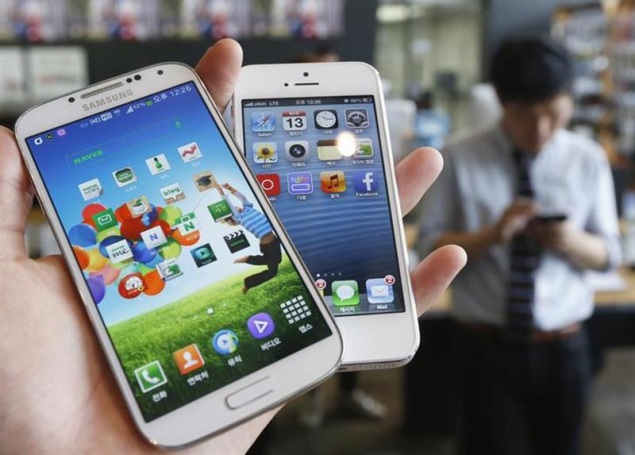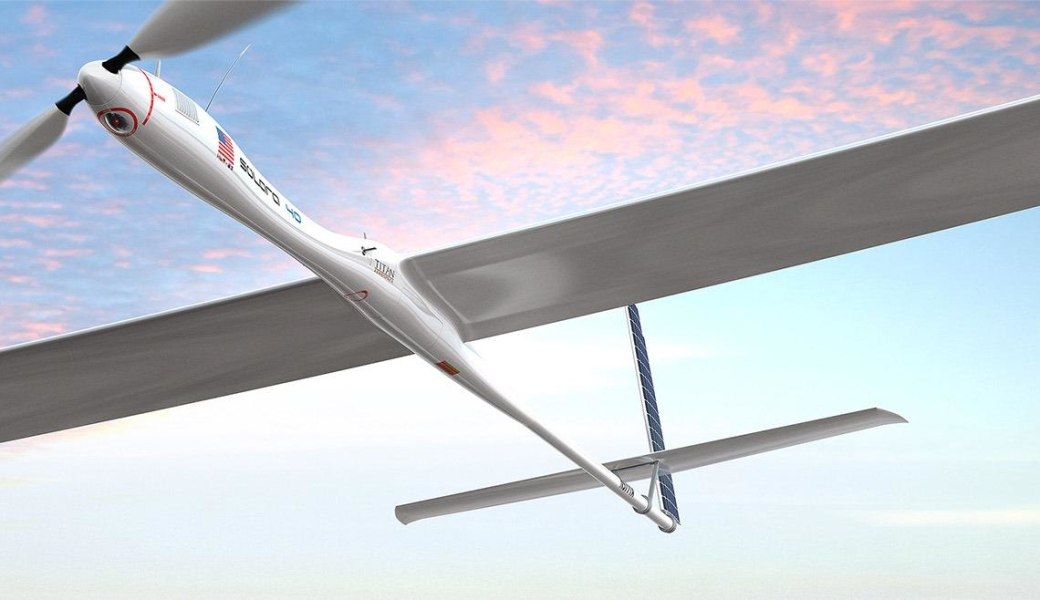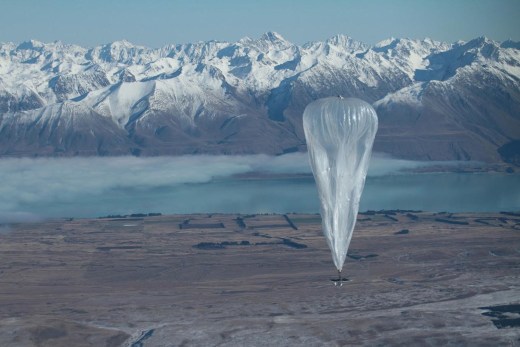
(Reuters) - Apple Inc's (
AAPL.O)
Chief Financial Officer Peter Oppenheimer will retire and hand the
reins to Luca Maestri in September, entrusting to the Italian-born
executive a cash pile the size of Vietnam's economy and the difficult
task of guiding Wall Street's expectations.
The 50-year-old born in Rome is taking over
with Apple at a crossroads. Investors continue to clamor for the company
to put its industry-leading $160 billion hoard to better use than just
parked overseas, while rivals Google (
GOOG.O) and Facebook (
FB.O) shell out tens of billions of dollars snapping up cutting-edge tech companies like Nest and WhatsApp.
Managing investors' outsized expectations may
become more difficult as Apple - facing slowing revenue growth and more
aggressive competition - dives deeper into lower-margin but
higher-growth emerging markets like China, where cheaper local players
Huawei and Xiaomi dominate.
"Maestri will be assuming this role at an
interesting time - when Apple is in the midst of launching more services
and likely needs to convince investors that it has more consistent
revenue streams in a commoditizing smart phone market," Barclays analyst
Ben Reitzes wrote on Tuesday.
"We know Maestri quite well and believe he
will support consistent plans for capital return and thoughtful,
achievable guidance."
Maestri, who has worked in countries from
Brazil to Thailand, is not expected to pursue radical changes to the
iPhone maker's capital return strategy.
Longer-term, the company is also under
increasing pressure to come up with the next big thing. Some investors
bet that Chief Executive Officer Tim Cook will finally unveil a
revolutionary new product this year, breaking a dry spell of several
years during which it stuck mainly to iterations of the iPhone and iPad.
Oppenheimer, 51, had been CFO since 2004 and
was the architect behind a $100 billion capital return program
established a year ago in response to demands the company do more with
its ballooning cash hoard.
He joined Apple from Xerox Corp (
XRX.N) in 2013. He spent 20 years at General Motors (
GM.N)
where he worked as CFO of several units including GM Europe. Before
joining Xerox, he was CFO of network equipment maker Nokia Siemens
Networks.
TAKING UP THE BATON
Over the past few quarters, Oppenheimer has
moved Apple, which for years routinely smashed investors' expectations,
toward more realistic financial targets and outlooks as the company
amassed size and expanded into new markets.
Its business has also grown rapidly beyond
mainly hardware sales and into areas such as software and digital
content. Now, Maestri assumes responsibility for outlining the
investment case for a company under an intense media and industry
spotlight.
"Managing Wall Street's expectations became an
exceptional challenge for Apple over the past couple of years," said
Morningstar analyst Brian Colello. "It's clear what drives Apple's
growth. The issue is managing such a large, scrutinized company."
"Now it's become more of a leveling-off (of expectations). And that will continue."
Apple's shares were up 0.7 percent at $531.24 in late trade.
Oppenheimer, who joined Apple in 1996, will
start handing over in June to Maestri. Named to the board of Goldman
Sachs Group Inc (
GS.N) on Monday, he said in Tuesday's statement he would use some of his free time to complete his pilot's license.
"When we were recruiting for a corporate controller, we met Luca and knew he would become Peter's successor," Cook said.
On Tuesday, he noted that Apple's revenue had risen to $171 billion from $8 billion during Oppenheimer's tenure as CFO.
Cook and other executives had said the company
intends to update shareholders and investors on their cash management
strategy around April.
The company's growing cash pile has been a
perennial source of discontent amongst investors, given much of it is
parked overseas without significant returns and the company has proven
conservative in pursuing acquisitions.
The company has said it will return $100
billion to shareholders by the end of 2015 through dividends and share
repurchases. In February, Apple said it had bought more than $40 billion
of its shares over the past 12 months, helping to satisfy activist Carl
Icahn and other investors, at least for now.
"Oppenheimer had a very successful run but
joined Apple at a time when the personal technology market was focused
exclusively on personal computers," said University of Notre Dame
visiting professor of marketing Brett Robinson, author of "Appletopia."
"Apple's hiring of Luca Maestri, who has broad
international experience, is consonant with Apple's strategy to expand
their global footprint."
Reuters







 Apple and Nokia were seeking major sanctions against Samsung for
disclosing confidential licensing agreements, but it appears Apple was
guilty of the same mistake.
Apple and Nokia were seeking major sanctions against Samsung for
disclosing confidential licensing agreements, but it appears Apple was
guilty of the same mistake.
 A patent application filed by Apple and released by the USPTO on
Thursday, entitled "Mobile emergency attack and failsafe detection,"
reveals the possibility that an Apple iPhone could determine when there
is an emergency situation and make phone calls or use other
communication options to alert the authorities. The patent describes
sensors on the handset that could determine if there has been an
automobile accident, a mugging, or a medical condition that could render
the iPhone owner helpless.
A patent application filed by Apple and released by the USPTO on
Thursday, entitled "Mobile emergency attack and failsafe detection,"
reveals the possibility that an Apple iPhone could determine when there
is an emergency situation and make phone calls or use other
communication options to alert the authorities. The patent describes
sensors on the handset that could determine if there has been an
automobile accident, a mugging, or a medical condition that could render
the iPhone owner helpless.

 Retailers may have a new tool to greet and cater to our emotions in real
time. San Diego based Emotient announced a new Sentiment Analysis
prototype application for Google Glass.
Retailers may have a new tool to greet and cater to our emotions in real
time. San Diego based Emotient announced a new Sentiment Analysis
prototype application for Google Glass. Device Insurer ProtectCELL said on Thursday that the Apple iPhone is
less likely than other smartphones to suffer a cracked display and other
problems that would require a replacement device. But the insurer did
say that an iPhone is more likely to be misplaced than other handsets.
To be more precise, ProtectCELL said that owners of the Apple iPhone are
54% less likely to require a replacement device for any reason.But while iPhone owners are 11% less likely to report a broken or
damaged device compared to those sporting other smartphones, they are
65% more likely to request a replacement device after misplacing their
handset. And something must have happened to tablet owners between 2012
and 2013. Tablet owners last year were 90% more likely to seek a
replacement slate than tablet owners the year before.
Device Insurer ProtectCELL said on Thursday that the Apple iPhone is
less likely than other smartphones to suffer a cracked display and other
problems that would require a replacement device. But the insurer did
say that an iPhone is more likely to be misplaced than other handsets.
To be more precise, ProtectCELL said that owners of the Apple iPhone are
54% less likely to require a replacement device for any reason.But while iPhone owners are 11% less likely to report a broken or
damaged device compared to those sporting other smartphones, they are
65% more likely to request a replacement device after misplacing their
handset. And something must have happened to tablet owners between 2012
and 2013. Tablet owners last year were 90% more likely to seek a
replacement slate than tablet owners the year before.



 We've chronicled President Barack Obama's love affair with his BlackBerry ever since he first won his first 4 year term as President (or POTUS). Along the way, the Commander in-Chief has received an Apple iPad 2 from the late Steve Jobs, and said that he is not allowed to use an Apple iPhone for security reasons.
Now, according to a report from Bloomberg, BlackBerry CEO John Chen has
held talks with the White House to encourage the staff to stay the
course.
We've chronicled President Barack Obama's love affair with his BlackBerry ever since he first won his first 4 year term as President (or POTUS). Along the way, the Commander in-Chief has received an Apple iPad 2 from the late Steve Jobs, and said that he is not allowed to use an Apple iPhone for security reasons.
Now, according to a report from Bloomberg, BlackBerry CEO John Chen has
held talks with the White House to encourage the staff to stay the
course.












 This is something of an odd story, because although it is something that
we've known about since October of last year, the details of it either
keep changing or keep being misreported. Originally, we heard that
Ashton Kutcher had been hired by Lenovo as a product engineer to work on tablets. Then last week at MWC, it was reported that Kutcher would also work on phones. But, it seems that may have been a misquote.
This is something of an odd story, because although it is something that
we've known about since October of last year, the details of it either
keep changing or keep being misreported. Originally, we heard that
Ashton Kutcher had been hired by Lenovo as a product engineer to work on tablets. Then last week at MWC, it was reported that Kutcher would also work on phones. But, it seems that may have been a misquote.







 With selfies in the news recently,
a new app for Windows Phone puts the fun back into the, ahem, art form.
Animal Face takes your face and replaces it with a face belonging to an
animal. Ok, so it is nothing but fun, that doesn't make it a waste of
time. And it s a free download after all, although for 99 cents you can
eliminate the ads and add more Animal Face options to the app.
With selfies in the news recently,
a new app for Windows Phone puts the fun back into the, ahem, art form.
Animal Face takes your face and replaces it with a face belonging to an
animal. Ok, so it is nothing but fun, that doesn't make it a waste of
time. And it s a free download after all, although for 99 cents you can
eliminate the ads and add more Animal Face options to the app.

 Silicon slinger MediaTek is developing chips that will raise the value
of smartphones by offering features like wireless charging, NFC support
and fingerprint recognition. Most chip producers are expected to offer
64 bit octa-core processors in the second half of this year, and in
early 2015. If this situation takes place, smartphones will have to
compete based on the number of different features they offer instead of
the number of cores employed by the processor.
Silicon slinger MediaTek is developing chips that will raise the value
of smartphones by offering features like wireless charging, NFC support
and fingerprint recognition. Most chip producers are expected to offer
64 bit octa-core processors in the second half of this year, and in
early 2015. If this situation takes place, smartphones will have to
compete based on the number of different features they offer instead of
the number of cores employed by the processor. If you've been desperately tapping the update button on your iPhone or iPad, in the hope that the iOS 7.1 update
is arriving any day now, you might be in for a pleasant surprise. Tech
head John Gruber claims that iOS 7.1 should indeed hit Apple's mobile
gear any moment, citing the perennial "little birdie".
If you've been desperately tapping the update button on your iPhone or iPad, in the hope that the iOS 7.1 update
is arriving any day now, you might be in for a pleasant surprise. Tech
head John Gruber claims that iOS 7.1 should indeed hit Apple's mobile
gear any moment, citing the perennial "little birdie".